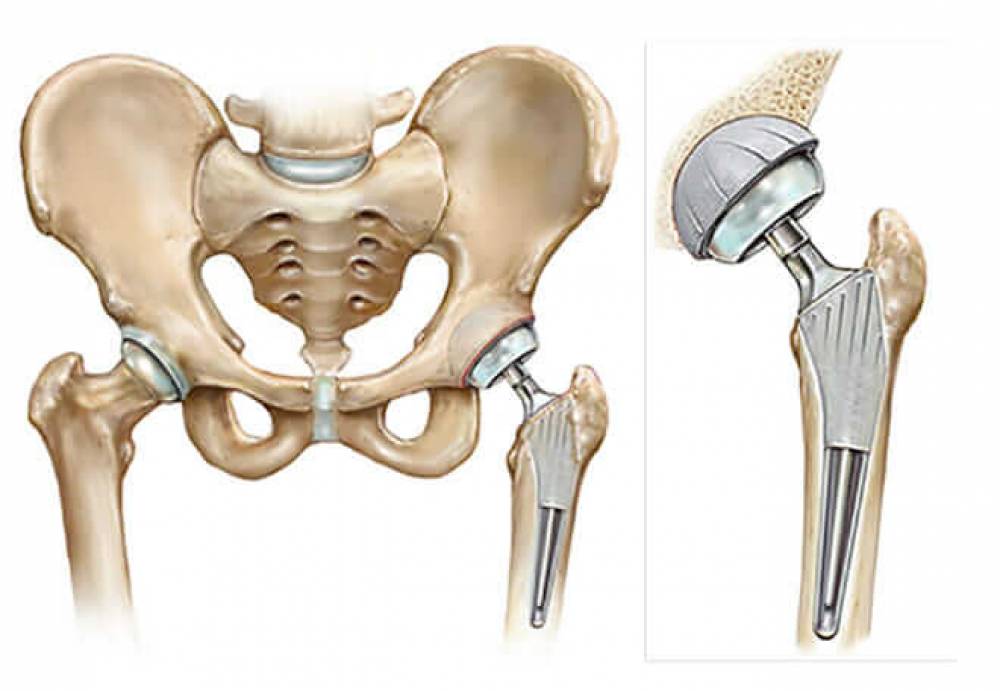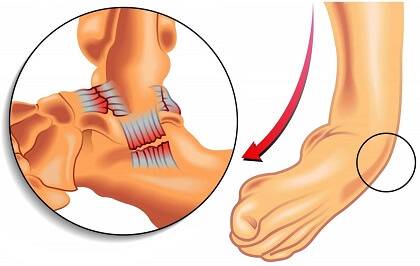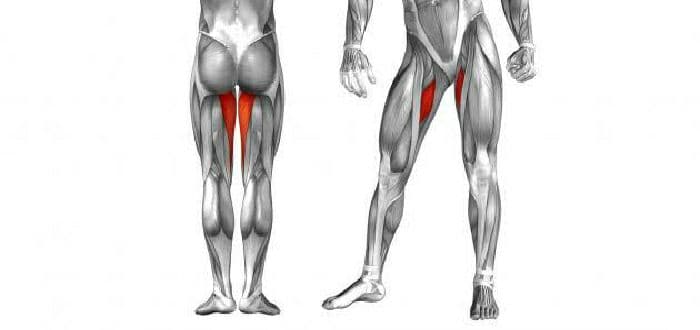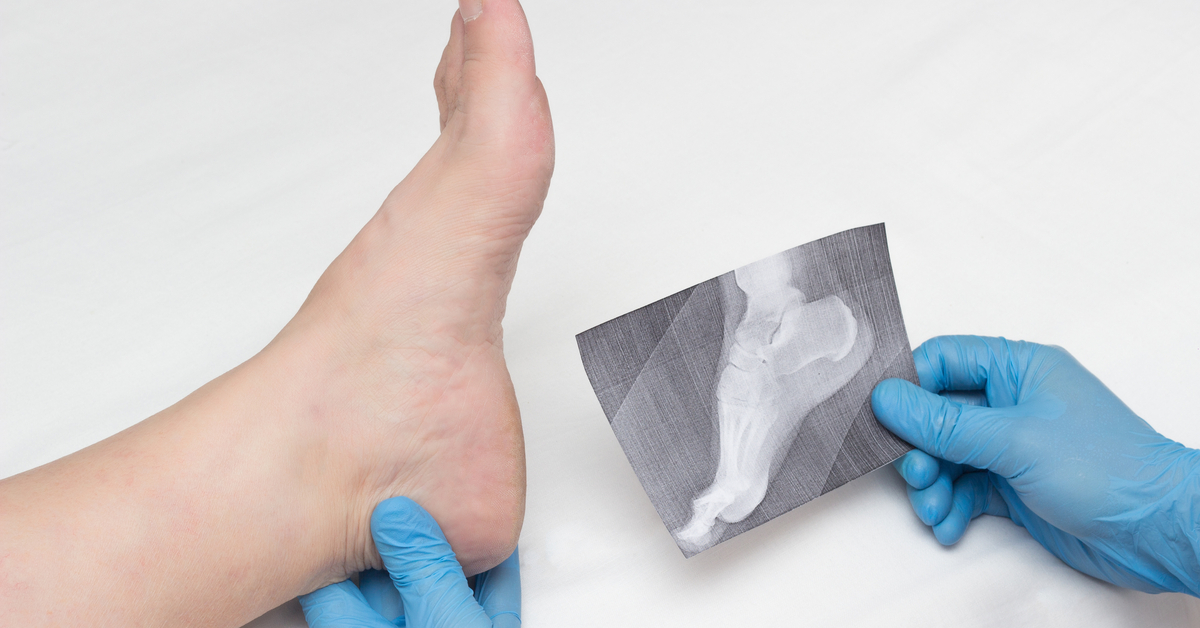Learn About Joint Replacement Surgery and How It’s Done
Joint Replacement Surgery, in this article, we will provide a comprehensive overview of joint replacement surgery, where we will explore the reasons that may necessitate this procedure, the necessary preparations before the surgery, and what can be expected during the recovery period after the operation. We will also shed light on the types of operations and prosthetic joints used, as well as the latest techniques in this field.

Joint Replacement Surgery
Joint replacement surgery is a surgical procedure that aims to replace a damaged or worn-out joint in the body with an artificial joint. One of the common procedures in this context is the replacement of the knee joint, and this surgery is used to treat cases of joint damage or wear due to health problems such as arthritis or aging.
The knee joint is a powerful and effective surgical procedure to relieve pain and increase joint mobility. Knee joint replacement surgery involves replacing the damaged parts of the joint with artificial metal and plastic components, where the worn-out layer of the thigh bone is replaced.
The damaged joint is carefully removed and replaced with the artificial joint, which is then secured using strong fixation materials such as screws or cement. The main goal of this procedure is to restore joint function and improve the patient’s quality of life.
Book your appointment now with Dr. Amr Amal, the expert in joint replacement surgeries, to receive distinguished treatment and personalized care.
What is Knee Joint Replacement Surgery?
Knee joint replacement surgery is a surgical procedure that aims to treat the wear and tear of the cartilage in the knee joint. Cartilage wear is a common problem that often occurs as a result of chronic joint inflammation, such as osteoarthritis, where the damaged or worn-out parts of the knee joint are replaced during this surgical procedure.
The preparation steps for knee joint replacement surgery include several important steps. First, the patient must consult the doctor and undergo the necessary tests to assess their condition, and the doctor will explain the benefits and potential risks of the surgery and answer any questions the patient may have.
The knee joint replacement surgery is performed under general anesthesia or local anesthesia based on the doctor’s recommendation and the patient’s condition. The damaged joint surfaces are then removed, and the joint surface is reshaped using artificial metal and plastic components.
After the knee joint replacement surgery, the patient should follow some advice to ensure proper recovery. It is important to avoid overloading the affected knee and follow a specific physical therapy schedule. It is recommended to do exercises to strengthen the muscles around the knee and improve flexibility.
Contact Dr. Amr Amal to get a comprehensive consultation on the joint replacement procedure and understand all the details and steps.

How is the Knee Joint Replaced
Many people suffer from knee joint problems that cause them pain and hinder their daily movement, and the recommendation is to undergo knee joint replacement surgery. Here are the steps followed in the knee joint replacement process:
- Prepare the patient: Before the surgery, detailed information about the procedure and its potential effects is provided to the patient, and a comprehensive medical evaluation is also performed to ensure that the patient is in good health for the surgery.
- Anesthesia: The patient is given anesthesia, whether the surgery is performed under general anesthesia or local anesthesia. General anesthesia causes complete loss of consciousness, while local anesthesia keeps the patient awake but numbs the area from the waist down to relieve pain.
- Cutting and replacing the joint: The surgeon makes the necessary cuts in the damaged bones of the knee joint, then carefully removes the damaged joint and replaces it with a high-quality artificial joint made of metal and plastic. Robotic techniques can also be used.
- Securing the artificial joint: The artificial joint is firmly fixed in place using special screws or a strong adhesive material, and the method of fixation depends on the patient’s condition and the surgeon’s preferences.
- Closing the incision: The incision made during the surgery is closed tightly using stitches or similar fastenings, with the aim of preventing any infection or excessive bleeding.
Benefit from Dr. Amr Amal’s experience in joint replacement procedures and learn about the available and best options for your health condition.
What are the Causes of Knee Joint Replacement?
Knee joint replacement surgery is a common procedure in the world today, and the various reasons for knee joint replacement are a necessary decision for many people. What are the most common reasons for opting for knee joint replacement surgery?
- Rheumatoid Arthritis: Rheumatoid arthritis is one of the main reasons that lead to knee joint replacement. This disease causes joint inflammation and irritation, leading to the gradual destruction and wear of the joint cartilage.
- Osteoarthritis and Knee Osteoarthritis: Osteoarthritis and cartilage wear in the knee are conditions that affect many people after the age of fifty, especially women after menopause, and this condition leads to a loss of bone density and weakness.
- Acute Injury or Damage to Bones and Ligaments: Severe damage to the bones or ligaments in the joint can occur as a result of accidents such as falls, sports injuries, or car accidents. In these cases, the joint can be significantly damaged and lose its function partially or completely.
Trust Dr. Amr Amal’s competence in providing comprehensive medical care for joint replacement surgery and achieving the best results.

What are the Risks of Knee Joint Replacement Surgery?
Such a surgical procedure may have some side effects and rare harms, and here we will highlight the most important risks and potential problems that can occur after knee joint replacement surgery. The common risks that may occur after knee joint replacement surgery may include:
- Limb Mismatch: Joint replacement surgery can lead to axis deviation or imbalance in the limbs, affecting the length and distance between the thighs, and some may need additional surgical intervention to adjust this deviation and improve balance.
- Infections: Infections can occur in the surgery due to surgical wounds, and swelling, pain, and irritation can be signs of infection. In some cases, antibiotics may be required.
- Blood Clots: Knee joint replacement surgery can increase the risk of blood clots in the veins, and if deep vein thrombosis develops, it can cause severe swelling and pain. It is important to be vigilant for any signs that may indicate the formation of blood clots.
- Reduced Knee Flexibility: Reduced joint flexibility in the knee joint may occur after surgery, which can affect knee movement and your ability to perform daily activities easily. You should follow the appropriate physical therapy procedures and exercises to enhance flexibility in the knee joint.
- Nerve and Tendon Irritation: The nerves and tendons surrounding the knee joint may become irritated as a result of the surgery, which may be accompanied by persistent pain, redness, or swelling in the knee joint. Symptoms should be monitored, and a doctor should be consulted if they persist.
Consult Dr. Amr Amal to get the right medical advice and professional guidance before and after the joint replacement surgery.
What are the Pains After Knee Joint Replacement Surgery?
After knee joint replacement surgery, patients may experience a variety of pains of varying severity in the subsequent period, and this is a natural and expected matter, as the body needs to adapt to the changes made by the surgery. These pains may be temporary and gradually subside.
Or they may persist for a longer period before disappearing completely, as muscle pain is one of the common types of pain after knee joint replacement surgery. This pain occurs due to the effect on the muscles around the knee during the surgical procedure, and usually, this type of pain is temporary and gradually disappears over time.
Some patients may experience joint pain after the surgery, which occurs due to the stimulation of the replaced joints and their adaptation in the initial period after the surgery. This pain is usually mild and gradually subsides over time with the use of prescribed medications and following medical instructions.
Some patients may feel a tightness or numbness in the area around the knee after the surgery, which occurs due to tissue swelling or nerve inflammation, and this feeling may persist for a short period, usually disappearing with time and the use of soothing treatments and cold applications.
Some patients may experience stiffness in the knee after the surgery, making movement and bending difficult and painful. This stiffness may result from inflammation or swelling in the joint after the surgery, and in such cases, patients are advised to practice appropriate physical therapy exercises to improve flexibility and relieve pain and stiffness.
It is important for patients to know that severe and persistent pain after the surgery should be reported to the medical team, as these pains may be a sign of potential complications such as infections or blood clots, and the attending physician should be consulted to evaluate the condition and take the necessary measures.
Learn about Dr. Amr Amal’s successful track record in performing joint replacement surgeries and how he always strives to achieve patient satisfaction.

What is the Physical Therapy Regimen After Knee Joint Replacement
Physical therapy is an important part of the rehabilitation program and aims to restore the strength and natural movement of the knee, and teach patients the correct walking methods to avoid any damage to the new joint. Physical therapy after knee joint replacement surgery involves several stages and exercises that must be followed regularly to accelerate the recovery process and strengthen the muscles around the knee.
- In the first week after surgery, the focus is on pain relief and swelling reduction through the application of ice and gentle massage, and the patient is also taught basic movements such as bending, lifting, and stretching the knee safely and comfortably.
- In the second week, movement and endurance gradually increase, and the patient can practice exercises to lift and move the leg in a standing position, focusing on strengthening the quadriceps muscle of the thigh and using relaxation and stretching exercises to improve joint flexibility.
- In the third week, the patient can exercise at a higher rate and pace, including bending, spreading, and stepping exercises to improve knee flexibility and muscle strength. Assistive devices such as motorized walkers can be used to facilitate the exercises.
- In the fourth week, endurance and strength gradually increase, and the patient can now safely perform full knee bending and stretching exercises, and resistance exercises using light weights or water resistance are used to strengthen the muscles and improve stability and balance.
Benefit from the modern techniques and methods followed by Dr. Amr Amal in joint replacement surgeries to ensure optimal results.
What is the Success Rate of Knee Joint Replacement Surgery?
Knee joint replacement surgery is considered one of the successful surgical procedures, with a high success rate. Online data indicates that the success rate of this procedure has exceeded 98%, making it one of the most successful joint replacement surgeries without a doubt. Recent research has shown that in the last ten years, the success rate of knee joint replacement surgeries has exceeded.
The success of knee joint replacement surgery is due to several factors. First, the crucial role played by the specialized medical team in this field is paramount. Performing this surgery requires orthopedic surgeons, qualified assistants, and a comprehensive medical team that cares for the patient’s aftercare.
Obtain the peace of mind and confidence in the joint replacement process with Dr. Amr Amal, who is committed to meeting your health needs and expectations.

Factors Affecting the Cost of Knee Joint Replacement Surgery
The cost of knee joint replacement surgery is one of the influential factors that must be considered when determining the price of the procedure. The cost of the required physical therapy and rehabilitation for the patient is considered one of the factors affecting this cost, and some other factors that affect the cost of the replacement procedure include:
- The general health condition of the patient and the level of medical care they require: Estimating the general health condition of the patient and the medical care they need in the post-operative period is a fundamental factor in determining the cost of the procedure.
- The cost of the required tests before the surgery: The patient may be required to undergo various tests before the surgery, such as laboratory tests and imaging tests, and these tests may affect the overall cost of the procedure.
- The degree of damage to the joint: The degree of damage the joint is suffering from is a factor that affects the cost of the replacement, as the treatment may include the replacement of additional components connected to the joint.
- The type of artificial joint used: There are several different types of artificial joints that can be used in knee joint replacement surgery, and the cost of each type varies based on its quality and materials used.
- The type of technique used in the surgery: The cost of the procedure varies according to the type of technique used, as some advanced techniques may require additional costs.
- The medical center and its readiness with the latest tools and equipment: The chosen treatment center and its preparedness to receive such types of operations is a factor affecting the cost, as it is preferable for the center to be equipped with the latest medical technologies and devices necessary for the success of the surgery.
- Treatment Duration and Post-Care: Knee joint replacement surgery requires a long treatment period and important post-care, which involves additional costs related to medical sessions and physical therapy.
Consult Dr. Amr Amal today to determine the appropriate treatment plan for your condition and start the journey of improvement and recovery.
Average Cost of Knee Joint Replacement Surgery
We can confidently say that the cost of knee joint replacement surgery usually ranges between 90,000 to 120,000 Egyptian pounds, including all tests and hospital expenses. As for the cost of knee cartilage cutting, this figure may vary depending on each case’s circumstances.
Although this figure is subject to change based on various factors, knee joint replacement surgery is a surgical procedure that requires attention and precision. It involves replacing the damaged joint with an artificial joint and is suitable for people suffering from knee joint wear due to injury or chronic conditions such as arthritis or rheumatoid arthritis.
Choose Dr. Amr Amal as a trusted healthcare partner, relying on his expertise and competence in joint replacement surgeries to achieve the best results for you.

Who Is the Best Hip Joint Replacement Doctor in Egypt?
Dr. Amr Amal, one of the best surgeons in Egypt in the field of hip joint replacement surgery, his professional medical perspective and extensive experience in this field have made him one of the doctors with a good reputation and desired by patients in Egypt. Dr. Amr Amal graduated as an orthopedic surgeon from Ain Shams University College of Medicine with honors and was a fellow in Ain Shams University hospitals for three years.
Dr. Amr Amal is known for his extensive experience in hip joint replacement surgery, being one of the most famous specialized doctors in this field in Egypt. Dr. Amr Amal has the experience and knowledge necessary to successfully perform all types of joint replacement surgeries.
Dr. Amr Amal empathizes with patients’ feelings, cares about their overall health, communicates effectively with patients, ensures their understanding of surgical procedures and expectations, follows modern treatment methods, and considers new medical developments and innovations in the field of joint replacement surgery.



















